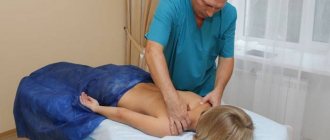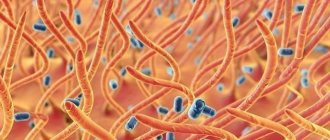A therapist is a general specialist whose competence includes issues of early diagnosis and treatment of many diseases of the gastrointestinal tract, lungs, liver, kidneys, cardiovascular, genitourinary systems, skin, metabolic disorders, etc.
The profession of a therapist is one of the most in demand in medicine. The therapist conducts the initial appointment with patients, prescribes treatment, and, if necessary, writes out referrals to specialists of a narrow profile. If the patient does not know which doctor he should see, then he should start with a visit to the therapist.
Areas of activity: what does a therapist do?
It is the therapist who is the “first line” of help to whom a person with alarming symptoms and suspicion of the presence of a disease goes. In the process of interaction with the patient, the doctor carries out a whole range of measures to help the patient.
Content:
- Areas of activity: what does a therapist do?
- Organs and parts of the body treated by therapists
- What diseases does a general practitioner treat?
- Who is a primary care physician and what does he do?
- Consultation with a therapist for pregnant women
- What symptoms should you consult a therapist for?
- What examination and treatment methods does the therapist use?
- Recommendations from therapists to strengthen the body’s overall resistance
First of all, the therapist begins to collect anamnesis, that is, conducts a survey and carefully studies the information obtained as a result in order to establish a general picture of the symptoms. The next stage of communication with the patient involves a physical examination, during which palpation and percussion of the organs of the thoracic and abdominal cavities, retroperitoneal space, auscultation of the lungs, heart and great vessels are carried out.
Additionally, the therapist prescribes laboratory and instrumental tests, for example, tests of blood, urine, feces and other biological materials, ECG, radiography, ultrasound. Analyzing the collected data, the doctor makes a decision about referring the patient to a specific specialist or prescribing general treatment measures.
It is the therapist who maintains the primary medical documentation - the patient’s outpatient record, which reflects the entire history of the disease, the diagnostic methods used and the prescribed treatment regimens, and also determines the degree of temporary disability and the need to open a sick leave. Mainly participates in medical examinations or medical examinations of the working and non-working population, issues various medical certificates, exemptions and conclusions in the medical record book.
The therapist’s area of competence also includes establishing the need for hospitalization of the patient already at the first stages of the examination.
How is the visit going?
The examination by the therapist begins with a questioning of the patient about complaints, the presence of chronic diseases, lifestyle, and family history. After which he begins to examine the patient; in some cases, the doctor may ask to undress to the waist. During the examination, the doctor assesses:
- body type;
- condition of the skin;
- mucous membranes;
- condition of the skeletal system;
- muscular system;
- joint condition;
- volume of subcutaneous fat.
Then the doctor proceeds to other clinical methods:
- Palpation is palpation of various parts of the body in order to assess their density, soreness and other structural units.
- Percussion - tapping. Based on the nature of the sound, the doctor makes a conclusion about the presence of certain pathological processes. For example, a dull percussion sound over the pulmonary surface indicates the presence of inflammation, and a drumming sound when tapping the abdominal area may be a sign of bloating.
- Auscultation - listening with a stethoscope to pulmonary breathing, heart murmurs or blood flow through large blood arteries.
Organs and parts of the body treated by therapists
A general practitioner must understand a wide range of diseases and their manifestations. Dwelling on the diseases that fall within the competence of a general practitioner, we can highlight the following disruptions:
- organs of the respiratory system;
- heart and blood vessels;
- kidney and urinary system;
- endocrine system;
- circulatory system;
- joints and muscles;
- connective tissues.
Wage
A therapist’s income depends on his qualifications, region and profile of the medical institution. The lowest salaries are in public clinics, while the highest rates are paid to doctors in large private clinics.
If you believe official sources, the average salary of a therapist in Russia is 38 thousand, in Moscow – 45 thousand, in St. Petersburg – 30 thousand rubles. Additional bonuses are given for the category of harmfulness (work in psychiatric institutions or infectious diseases departments). However, here I immediately remember an old joke: Ivan Ivanovich eats pork, and Pyotr Petrovich eats cabbage, but on average they eat cabbage rolls. It's the same with wages. If for Moscow 45,000 rubles is the norm, then in small cities an ordinary local therapist is often content with the amount of 12-14 thousand (sometimes even less).
What diseases does a general practitioner treat?
Most diseases, if they do not require surgical intervention by a surgeon, can be diagnosed and observed by a therapist, for example:
- heart failure, anemia, post-infarction conditions;
- nephritis, cystitis, pyelonephritis;
- initial stages of chronic kidney disease;
- thyroid diseases, diabetes, metabolic disorders;
- pancreatitis, gastritis, duodenitis, cholecystitis, biliary dyskinesia and other destructive changes in the gastrointestinal tract;
- arthrosis, arthritis, osteochondrosis, sprains, injuries and bruises;
- pneumonia, bronchitis, bronchial asthma, chronic obstructive pulmonary diseases, pneumoconiosis;
- ARVI and other respiratory infections of the upper respiratory tract;
- connective tissue dysfunction.
In addition, the general practitioner diagnoses and studies the symptoms that accompany many diseases, namely:
- drowsiness;
- increased irritability;
- chronic fatigue;
- swelling;
- depressive states;
- sleep disorders;
- febrile syndrome;
- rashes on the body of unknown etiology;
- headaches and pain syndromes without clear localization.
Compulsory assistance – a right or a duty of a local doctor?
Many people do not want to get help from a doctor. This may be their personal choice or the impact of the disease state on the psyche, and older people are always at risk here. What kind of doctor will go to understand incomprehensible and alarming cases of evasion of medical care? That's right - a district police officer.
Given: my colleague was called to Raisa Valentinovna by the patient’s daughter, concerned that her mother began to weaken and lose her appetite. The woman herself thought that everything was fine.
Solution: when called, the local therapist immediately drew attention to the pallor of the skin and mucous membranes. The patient's tongue was rough and inflamed. The elderly woman was apathetic, reluctant to make contact, and wanted in every possible way to reduce the time of communication with the doctor. The doctor had to be very persistent in order to conduct an examination, measure my pulse and blood pressure. The patient’s daughter was nearby and was very worried - she hoped that the district police officer would immediately prescribe medications that would get her mother back on her feet. But my colleague explained that it would be illogical to simply fight senile depression, which was certainly present - first of all, it was important to conduct an examination in order to make a correct diagnosis.
A day later, the pensioner’s daughter came to an appointment with the results of the examination to the local therapist, which confirmed B12-deficiency anemia. A follow-up plan was developed and, at the same time, cyanocobalamin injections were prescribed, as well as a diet rich in foods containing vitamin B12. Two weeks after the start of treatment, the patient came to the clinic for an appointment herself. Outwardly, she looked much better, and it was felt that her mood had noticeably lifted.
Answer: a local doctor brings medical care to where it is needed, and not just to where people want it. This demonstrates the true humanity of the local service, whose tradition is active patronage of patients.
Who is a primary care physician and what does he do?
The local physician is a key link in the system of medical care for the population. This doctor takes a major part in the healing of the entire adult population living in a specific territory - an area that is assigned to him, and, for this reason, local therapists can be called family doctors, because they constantly interact with the same circle of people, are familiar with their living conditions, lifestyle, and previous illnesses. Thanks to this, the local therapist can more quickly and accurately predict the possible causes of certain diseases in a particular person.
The local doctor maintains dispensary records and observation of chronic patients, monitors the timely implementation of preventive measures, vaccinations, carries out primary diagnosis of the disease, prescribes and carries out rehabilitation and preventive measures. After the patient’s recovery, the patient’s condition and ability to work are assessed and he is given a certificate of incapacity for work or a certificate of exemption to be presented at his place of study or work.
Who is the profession suitable for?
Everyone can work, regardless of gender. To do this you must have certain qualities:
- stress resistance and patience;
- high analytical skills;
- good memory;
- attentiveness and observation;
- knowledge of human psychology;
- responsibility.
Since the specialist’s duties include visiting his patients at home, he also requires physical endurance. Doctors of this profile study all their lives, because the science of helping sick people is improving and requires a qualified approach. Therefore, the desire to learn new things is an integral part of the work of any physician. It is also very important to simply love your profession, because in our country it rarely brings tangible cash dividends.
Consultation with a therapist for pregnant women
After the obstetrician-gynecologist, the second most important examination of pregnant women occurs with a therapist. As a general rule, consultation with this doctor occurs at least twice - when registering for pregnancy monitoring, and at the thirtieth week. A woman comes to an appointment with a doctor with ready-made blood tests, urine tests, a coagulogram, blood biochemistry, and she also first needs to undergo an electrocardiography procedure.
During the examination, the doctor collects information about past illnesses, examines medical documentation and test results: this way the doctor can determine the presence of any pathologies or dysfunctions of the body that are not related to the state of pregnancy. If any chronic diseases are detected that may pose a danger to the unborn child, the therapist may decide to hospitalize the woman in a hospital.
When examining a pregnant woman, the therapist must be very attentive to all manifestations indicating the possible presence of diseases or abnormalities in the functioning of organs and systems, because any health problems of the expectant mother can negatively affect the development of the fetus. Another feature of examination and treatment of pregnant women is that women in such a special situation are not allowed to take all medications, and some research methods, for example, radiography, are not recommended for use with them at all.
Various complications during pregnancy, such as anemia, hypertension, toxicosis, hypoxia, require systematic monitoring by a physician and the prescription of appropriate medications approved during pregnancy.
Prospects for the profession
A therapist is a specialist with whom the history of medicine began. And as long as diseases exist, this profession will always be in demand. Perhaps in the future they will invent devices for complete diagnostics that will be able to give recommendations for the treatment and prevention of diseases. But so far, no one method has been able to replace the human ability to analyze a situation depending on the individual characteristics of each person. Simply put, the specialty will be in demand for many years to come, but the level of income will largely depend on dedication and luck.
What symptoms should you consult a therapist for?
In the normal state of a person, the presence of some deviations is sometimes allowed, for example, a rare feeling of fatigue or the appearance of muscle pain after too intense physical activity. However, it is important to understand and distinguish those manifestations and sensations that may be signs of an incipient disease. So, the reasons for contacting a therapist are:
- causeless weight loss;
- chronic fatigue, which occurs constantly over a long period of time;
- increased fatigue, when even the usual everyday stress causes rapid malaise;
- pain of any localization;
- tinnitus, unmotivated weakness, numbness of the limbs;
- characteristic primary signs of diseases, for example, runny nose, sore throat during ARVI;
- constant low-grade fever or sudden increase in temperature;
- changes in the external characteristics of urine and feces;
- decreased concentration and attention.
Other painful conditions, a feeling of heaviness, physical or mental discomfort are also indications for visiting a therapist. You can get an appointment and consultation with a doctor at a clinic or hospital. If the symptoms of the disease are accompanied by a very high temperature or a marked deterioration in health, a doctor is called to the home for an initial examination and decide whether the patient needs to be admitted to a hospital or remain at home for treatment.
Specialties, universities and Unified State Exam subjects
To master a profession such as a therapist, it is necessary to obtain a higher medical education in the specialty “General Medicine” within six years. After this, previously it was necessary to spend another year to undergo additional training and practice, and then receive a qualification certificate. Starting from 2021, a new decree was issued on the abolition of the internship - instead, the student takes test tasks and an exam from a specially created commission. After successful completion, the graduate receives permission to work independently.
During the year there is a mandatory practice in an outpatient clinic or clinic, and then you can make a free choice. There is also the option to continue scientific education and go into residency for two years away from work. Throughout its entire duration, therapists receive points for accreditation; they are given in the following cases:
- participation in scientific conferences;
- publication of articles;
- writing books on medical topics;
- defense of the thesis.
The number of points is calculated over a period of 5 years, after which the accreditation commission decides whether the doctor can continue his practice. If they are not enough, then a decision will follow to prohibit further practical activities.
To enter a medical school, an applicant takes tests. At the moment, the average passing score, which depends on the location and prestige of the educational institution, ranges from 235 to 435.
Before enrolling to study to become a doctor, you must pass testing in the following subjects:
- chemistry;
- Russian language;
- biology.
After successful completion, any doctor with a specialization in General Medicine can then work in the following industries:
- pediatrics;
- cardiology;
- pulmonology;
- endocrinology;
- therapy;
- rheumatology;
- neurology.
He also has access to rarer professions (hematologist, cosmetologist, hepatologist, nephrologist). After graduating from a medical university, the choice is one of 100 specialized specialties, most of which are therapeutic.
In Russia there are 86 higher educational institutions where you can obtain the profession of a general practitioner. The best of them are:
- Moscow State University named after M.V. Lomonosov (Faculty of Fundamental Medicine).
- Division of the Novosibirsk National Research State University (Institute of Medicine and Psychology).
- First Moscow State Medical University named after. I. M. Sechenov.
What examination and treatment methods does the therapist use?
In addition to the initial examination and questioning of the patient, to make a diagnosis, the doctor must collect all objective information about the current state of the body. For this purpose, the therapist prescribes some laboratory tests. Based on the results of a general urine test, it is possible to determine the condition of the organs of the urinary system, as well as diseases of other organs and systems, manifested in the detection of certain elements in the urine sediment.
A general blood test shows the number of blood cells, from which one can conclude that there are inflammatory processes of a viral or bacterial nature in the body, as well as blood diseases, allergic reactions or suspicion of malignant processes.
Stool analysis can show the presence of pathogenic microflora, parasites or helminths.
The doctor may also prescribe a blood sugar test if diabetes is suspected.
In addition, therapists use other functional methods for diagnosing diseases:
- ultrasonography;
- radiography;
- electrocardiogram;
- fluorography;
- CT scan;
- digital mammography;
- Magnetic resonance imaging;
- other ways of examining the patient.
Further actions taken by the therapist consist of making a diagnosis, after which the doctor decides whether he can continue further treatment of the patient on his own, or whether it is necessary to refer the patient to a specialist. For example, when identifying ailments that require surgical intervention, the surgeon is directly involved in the treatment process and makes the decision to perform the operation.
The therapist does not prescribe surgical treatment methods; his competence includes the development of a conservative treatment plan with the prescription of appropriate medications in different forms - tablets, syrups, suspensions or solutions for intramuscular and intravenous administration. Also, if indicated, the doctor writes out a referral for physical therapy procedures, such as electrophoresis, magnetic therapy, ultrasound, quartz treatment, exercise therapy and massage.
As a preventative measure, the therapist can determine the order of adult vaccinations.
For patients who have undergone medical or surgical treatment, the doctor prescribes rehabilitation measures, including massage courses, special procedures, physical therapy, and also gives recommendations on limiting physical and work activity, creating a diet, sleep and rest.
Story
The history of ridding people of diseases goes back to ancient times. Even before the invention of drugs, there were healers and healers who successfully used herbs and other natural ingredients for treatment. But it was the scientific approach to treatment that originated during the life and work of Hippocrates, to which all physicians take an oath after completing their training. It includes the basic principle of the doctor - “do no harm.” During the time of this great scientist, the unity of man and the environment, as well as the need for bed rest to speed up the healing process, had already been proven.
During the same period, the great Avicenna practiced and studied the science of treating patients. In his works, he wrote about how strongly the patient’s desire to get well influences the likelihood of his recovery, as well as the connection between the disease and psycho-emotional characteristics. In the 18th century, Anton de Gaen proposed a method for changing body temperature, and Leopold Auenbrugger introduced percussion into examination with a detailed description of the rationale for its necessity.
Medical science in the 19th century was enriched with new discoveries. Rene Laennec invented a stethoscope for listening to the heart and other organs, the first instrumental diagnostic methods appeared, and in the 90s of this century X-rays were discovered. Doctors of many specialties still use this unique discovery to identify pulmonary, articular and other pathologies.
In Russia, therapy was based on the discoveries of great physiologists (Sechenov, Pavlov, Botkin). Ostroumov created a palpation technique for examination. Therapists began to be taught according to Mudrov’s postulate, which called for “treating not the disease, but the patient,” thereby paying attention to the individual characteristics of the body and its ability to recover.
Rural doctors
Rural therapists are doctors who, if necessary, can not only prescribe treatment, but also examine pregnant women, help with exacerbation of chronic diseases, and refer them to the hospital for surgery in a timely manner.
Each therapist treats not only the disease itself, but also helps to fully recover from it. Among other things, the doctor has the right to give a referral for examination at a regional medical center or, conversely, to prescribe treatment at the place of residence.










